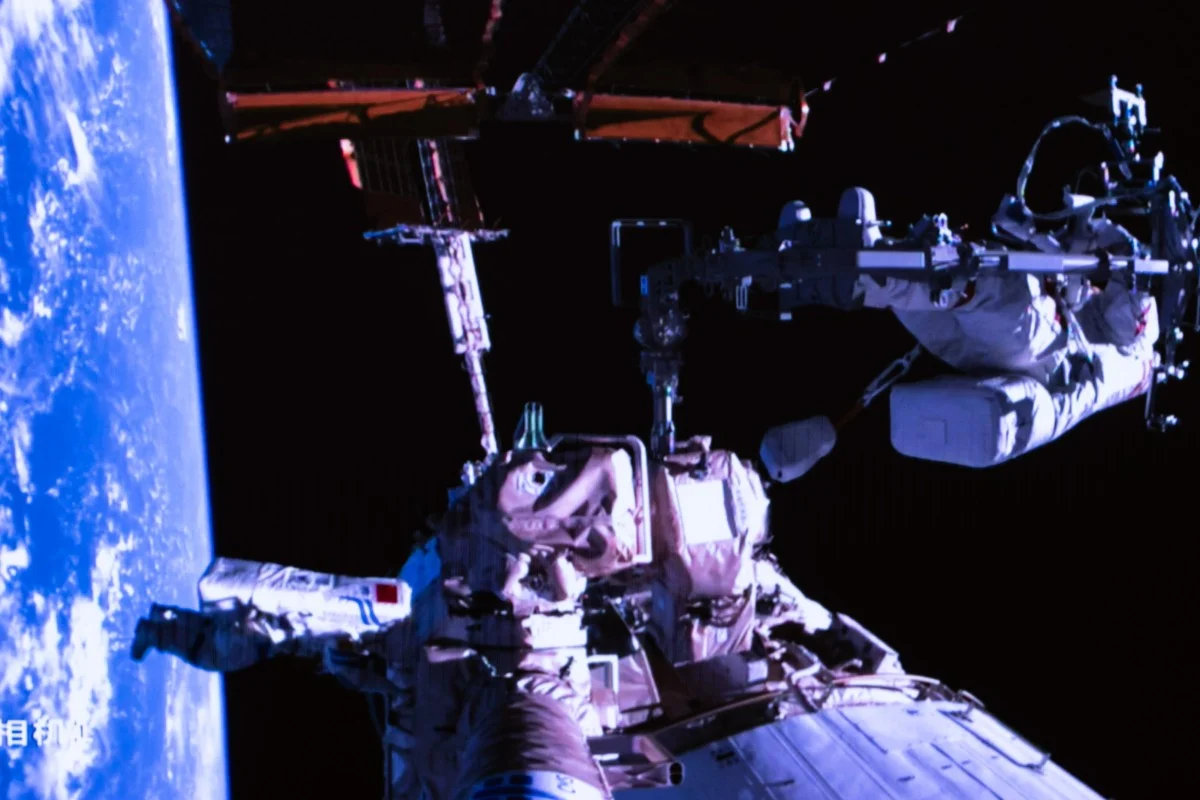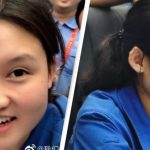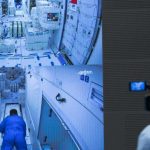China’s Shenzhou 17 crew repairs solar panels outside Tiangong station in space first for country
中国神舟十七号机组在天宫空间站外维修太阳能电池板
Challenging 7½-hour extravehicular feat is of ‘extraordinary significance’, mission commander Tang Hongbo says.
具有挑战性的7个半小时舱外壮举具有“非凡的意义”,任务指挥官唐洪波说。
Shenzhou 17 spacecraft crew have repaired damaged solar array panels on the Tiangong space station, in the first such extravehicular activity by Chinese astronauts.
神舟17号飞船机组人员修复了天宫空间站上受损的太阳能电池板,这是中国宇航员首次进行此类舱外活动。

The mission, lasting about 7½ hours, was carried out by the three-member team on Thursday, with the help of the space station’s robotic arm and ground engineers, according to the China Manned Space Agency.
据中国载人航天局称,这项任务持续约7个半小时,由三人团队在空间站机械臂和地面工程师的帮助下于周四执行。
Two of the crew ventured outside Tiangong’s Tianhe core module to access and mend the front and outer sides of the solar panels, the agency said. Mission commander Tang Hongbo rode the robotic arm to reach the damaged panels, as Tang Shengjie moved along a hand rail to provide backup.
该机构表示,其中两名机组人员冒险前往天宫的天河核心舱外,以访问和修补太阳能电池板的正面和外部。任务指挥官唐洪波骑着机械臂到达受损的面板,而唐胜杰则沿着扶手移动以提供支援。
The third crew member, Jiang Xinlin, stayed within the core module to oversee the movements of the robotic arm.
第三名机组人员江新林留在核心舱内,监督机械臂的运动。
The flexible and bendable panels, also known as “wings”, can use the sun’s rays to help power the Tiangong.
柔性和可弯曲的面板,也称为“翅膀”,可以利用太阳光线为天宫提供动力。







